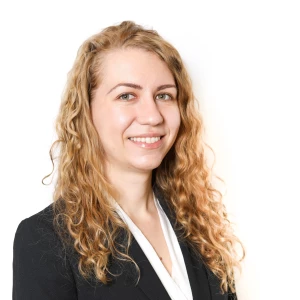Let’s assume I got an Investment or M&A case and somehow I end up doing a net present value calculation (yay). Now probably I got or calculated the investment sum and the future cash flows per year.
My question now is: How do I get the discount rate and how should I set the time frame (=how many years to include)?
Is it appropriate to just ask the interviewer for it or am I actually the one who should come up with assumptions (and if yes, how)?
Thank you in advance! :)
Case: Net Present Value Calculations


Hi Anonymous,
To answer your questions, I will first describe the theoretical correct valuation approach, and then the simplified approach you can normally apply in consulting interviews.
Full DCF Analysis
From a theoretical point of view, the discount rate is normally approximated with the WACC of the company (Weighted Average Cost of Capital), which can be computed as follows:
WACC = Re x E/V + Rd x (1 - corporate tax rate) x D/V.
where:
Re= Cost of Equity
Rd= Cost of Debt
E= Equity
D= Debt
V= Total Value (E+D)
Unless you are evaluating something that will not produce any cash flow after some time (eg an oil tank lasting 3 years that will then be destroyed), the time frame should be indefinite, since the common assumption is that a company will last forever.
In valuation, the common approach is to compute the detailed free cash flow for a certain period of time (usually 5 years) and then apply a terminal value formula for the remaining (infinite) years. For example, you may find that free cash flows is the following:
Y1= $18M
Y2= $21M
Y3= $22M
Y4= $23M
Y5= $24M
(As a quick definition of free cash flows: it’s equal to Revenues-Operating Costs-Taxes-Net investment-Change in Working Capital).
The terminal value formula from year 5 to infinite is the one of a perpetuity using the Gordon Model:
TV=Terminal Value = Y5 * (1+Long-Term Cash Flow Growth Rate)/(Discount Rate – Long-Term Cash Flow Growth Rate)
Say Terminal Value ends to be $240M and WACC is 10%. Then the actual Enterprise Value of the company would be:
EV=Y1/(1+i)^1+Y2/(1+i)^2+Y3/(1+i)^3+ Y4/(1+i)^4+Y5/(1+i)^5+ TV/(1+i)^5
That is:
EV=$18M/(1.1)^1+$21M/(1.1)^2+$22M/(1.1)^3+ $23M/(1.1)^4+$24M/(1.1)^5+$240M/(1.1)^5=$230M
Now, let’s see the simplified approach.
Simplified DCF Analysis
Unless you have a financial background, you probably don’t need to go through all the previous details in a consulting interview. In particular, going back to you second question, to simplify things you may ask the interviewer the following questions:
- Can I assume stable cash flow (or: can we assume Y1=Y2=Y3=Y4=Y5=..)?
- Do we have any information on the specific WACC number of the company? If not, could I approximate it to 5% (low-risk company) or 10% (medium-risk company)?
Since an M&A consulting case has far more elements to go through than the formulas above, it is likely they will allow you to do so. You may also ask if you could approximate Free Cash Flow with Net Profit to further simplify the formula.
With these simplifications, you can basically derive the result with a single formula, using the Gordon Model. For a medium risk company, for example, since we assumed no growth in cash flow, the result will be:
EV=Y1/WACC=$18M/0.1=$180M
In the end, in almost all the cases you will not need more than the simplified approach; it would still be good though that you know the theory behind the full theoretical model as a backup.
Hope this helps.
Francesco
Francesco gave an excellent answer, so I suggest to check that out! Want to add a bit more to the simplified approaches, because those are the most important ones in case interviews.
Also, while detailed knowledge of the formulas would be expected from business majors, it is not expected from candidates majoring in other fields, e.g., engineering, physics, or social sciences. Same goes for specific business terms (e.g., difference between free cash flow vs. net profit) -- no need to know for non-business majors.
Here the 4 ways I found to simplify which are applicable for all candidates:
- Time to cash back
- Limited time, interest rate 0%
- Limited time, positive interest rate
- Stable cash flow, positive interest rate, perpetuity (simplified Gordon Growth Model -> less important)
- Stable cash flow growth rate, positive interest rate, perpetuity (Gordon Growth Model -> less important)
Details:
1) Time to cash back
Probably the simplest of them. Just assume an investor wants to "make their investment back" within X years. Assume X in the range of 4-8 years (as this is not scientific, there really is no "right" value). Add the cash flows up until year X, and voila, this is the net present value. This is easy and simple, avoids discussion of the interest rate and complicated calculations, and is still reasonable to do. Example: A private equity investor wants to buy a company that is planned to make $100, 120, 140, 180, 200, 250M over the next six years. They want cash back before interest within 5 years. So they should pay $740M max (leave out year 6 as they want cash back after 5 years). Adding interest / cost of capital is a bit tricky as it then becomes recursive, but you can estimate it to get you into the ballpark.
2. Limited time, interest rate 0%
In many cases, the investment only pays back for a limited time (real estate depreciates, or licenses / patents expire). If you assume 0% interest, you can just add up the cash flows over the limited time period to get the maximum any investor would pay for the investment object at 0 profit. Example: Restaurants wants to acquire license/permit to operate a food cart in San Francisco, valid for 3 years. How much should it pay for the license? --> Calculate investment necessary now, free cash flow from the business for 3 years, and add it up. (Add resell value of investment after 3 years if you want to go fancy).
3. Limited time, positive interest rate
Basically same as 2, but you need to do some discounting guesstimate. I have seen this asked of business majors to do some estimates of discount factors in their heads over limited time spans. Not too common though.
4. Stable cash flow, positive interest rate, perpetuity
This is a common and simple way to calculate NPV, so definitely good to know. Assume the cash flow is constant in perpetuity (= forever -- which is kind of long in business and the biggest critique of the model). You can then just divide the cash flow by the interest rate to get the NPV (Compare Francesco's answer on this). Example: Investor wants to buy stable boring company Y which is producing $10M free cash flow p.a. forever. The investor wants at least 5% return. So, the max price to be paid would be $10/.05 = $200M.
5. Stable growth rate, positive interest rate, perpetuity
Less important, but maybe useful - same case as 4, but with positive perpetual growth forever (even a bit less common than 4 in reality :). In that case, you deduct the positive growth rate in the denominator. Example: Same as 4, but the company is growing at 3% p.a. forever. So formula and result become $10/(.05-.03) = $10/(.02) = $500M.
Lastly, your question was also about how to estimate the discount rate / WACC. I have found this to be out of the scope of interviews at almost all times. Generally in todays low interest environment, anything between 5-10% for risky assets should be fine, maybe up to 20% for high risk. But generally, either a candidate has some prior knowledge of this to go this deep, or the interview is for a position warranting this knowledge (e.g., application to PE or consulting firms focusing on PE).
All the best with your interviews!
Dolf

Awesome explanations by Dolf and Francesco.
If you are interviewing for a position with strong corporate finance aspect to it (M&A, PE, consulting for the priors), you should be able to tell the effects of changes to the formula. So not necessarily all the math, but the direction of effects. Things like:
- What happens if we leverage more (= add more debt)? Here you should also know that you can only leverage so much before the interest rate on debt starts going up
- What happens to our cost of capital if the Fed starts increasing interest rates?
- How will the growth outlook for the company change the valuation?
- And if they really want to go deep, then they'll ask how the cost of equity is calculated. Although I would have a hard time imagining that in an non investment banking interview ;-)
Have fun!
Elias

















